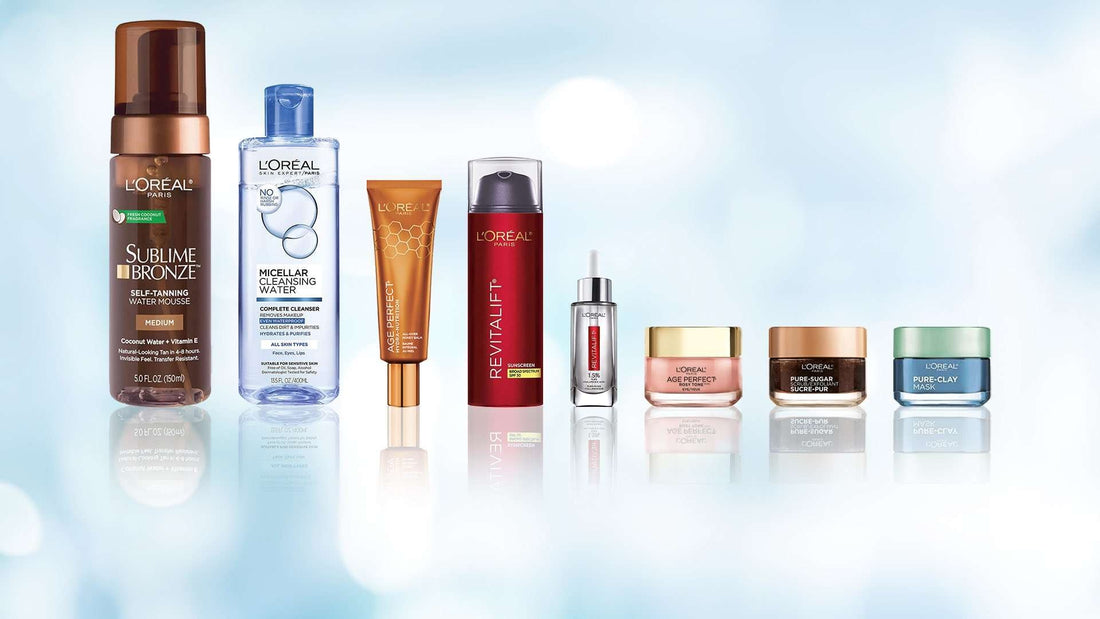Beauty Products to Avoid: Expert Insights and Safer Choices
Estimated Reading Time: 8 Minutes
- *Learn why prostaglandin analogue lash serums might pose risks and what to consider as safer alternatives.*
- *Understand the hazards associated with at-home nail systems and the importance of proper ventilation and product quality.*
- *Identify red flags when shopping online for beauty products and how to choose regulated, transparent options.*
- *Discover the drawbacks of soap-based cleansers and how to better care for your skin barrier.*
- Lash Serums with Prostaglandin Analogues – Potent But Risky
- At-Home Nail Systems – Dip Nail Kit Risks and Safer Options
- Shopping Online – Safety Red Flags and How to Avoid Dodgy Products
- Skincare Pitfalls – Soap-Based Cleanser Disadvantages
- Makeup Challenges – Tinted Sunscreen Problems & Mascara Alternatives
- Packaging Woes – When Form Fails Function
- Conclusion
Lash Serums with Prostaglandin Analogues – Potent But Risky
When it comes to beauty products to avoid, expert advice from a chemist is invaluable. With the rising popularity of eyelash extensions and fuller lashes, ingredients like prostaglandin analogues, such as bimatoprost, are used to boost lash growth dramatically.
Potential side effects include:
- Eyelid irritation, redness, and itching, especially in individuals with pre-existing eye conditions (weloveeyes).
- Darkening of eyelid skin and pigmentation changes that can be permanent.
- Fat loss around the eyes resulting in a sunken appearance (skintypesolutions).
- Rarely, permanent changes like iris colour alteration and muscle weakness in the eyelid (pubmed).
For those seeking safer options, peptide-based lash serums may be a viable alternative—always check the ingredient list and opt for reputable brands.
At-Home Nail Systems – Dip Nail Kit Risks and Safer Options
Longwear nail enhancements such as acrylic, gel, and dip nail kits have grown in popularity. However, dip nail kit risks should be taken seriously, as they can trigger allergenic reactions and respiratory symptoms due to volatile chemicals.
Inadequate ventilation and the use of toxic gel polish removers containing harmful solvents like dichloromethane (elle) further compound these risks.
Consider switching to safe at-home nail gels or traditional methods—using an acetone soak and gentle filing—to minimize hazardous exposure.
Shopping Online – Safety Red Flags and How to Avoid Dodgy Products
Shopping online for beauty products requires vigilance. Unregulated marketplaces such as Temu, AliExpress, and Shein may offer products that skip quality control.
Always prioritize products from regulated, established brands by checking for ingredient transparency, proper safety seals, and regulatory markings like batch codes and the country of manufacture.
Skincare Pitfalls – Soap-Based Cleanser Disadvantages
Traditional soap-based cleansers can seem effective, but their high pH may disrupt your skin's natural barrier. This can lead to tightness, dryness, increased oiliness, or even irritation.
Switching to gentle, low-pH cleansers can better reinforce and maintain your skin’s barrier while ensuring proper cleansing.
Makeup Challenges – Tinted Sunscreen Problems & Mascara Alternatives for Sensitive Eyes
Tinted sunscreens, though fashionable, often offer a limited shade range—leaving consumers with deeper skin tones underserved. For example, many European brands provide fewer options, whereas Australian alternatives like Cancer Council's BB cream come with more inclusive shade variations.
It is important to note that the SPF indicated on tinted sunscreens only assures UVB protection. Layering foundation over sunscreen can provide a broader coverage zone.
For sensitive eyes, consider alternatives such as hypoallergenic fiber mascaras, magnetic false lashes, or simply opt for false eyelashes on special occasions to avoid irritation.
Packaging Woes – When Form Fails Function
Even exceptional skincare formulations can be compromised by poor packaging. Faulty pumps or leaky squeeze tubes not only waste expensive products but also increase the risk of contamination.
Products in containers that do not protect from sunlight or air exposure may lead to accelerated degradation of active ingredients. Consider transferring such products into a more appropriate, sterile container while remaining vigilant for any changes in texture or scent.
Conclusion
Being informed about which beauty products to avoid empowers you to make safer and smarter decisions. As one might say, "You can’t eliminate all risks, but you can manage them."
Leverage trusted sources, listen to your skin, and share your experiences to help others. The world of beauty is meant to be explored—safely and confidently.
Q: Can I use tinted moisturisers instead of sunscreen?
A: While some tinted moisturisers offer SPF protection, they only cover UVB rays. For comprehensive protection against both UVA and UVB rays, a dedicated sunscreen is recommended.
Q: I bought a DIY nail kit but now I am concerned about the risks. What can I do?
A: Consider switching to safe at-home nail gels or opting for professional services. Ensure that you have proper ventilation and avoid using toxic gel polish removers, especially those marketed as “burst” products.
Q: I want to buy beauty products online safely. What should I keep in mind?
A: Always choose products from reputable, regulated brands. Verify ingredient transparency, look for regulatory markings such as batch codes and country of manufacture, and be cautious with excessively discounted items.
Q: What are some alternatives to traditional mascara for sensitive eyes?
A: For sensitive eyes, hypoallergenic fiber mascaras, magnetic false lashes, or even opting for false eyelashes can be effective alternatives that reduce the risk of irritation.
Q: What to do if a beauty product has bad packaging?
A: If you encounter problematic packaging, consider repackaging the product into a more suitable, sterile container. However, remain alert to any changes in texture or scent as these may indicate degradation.





